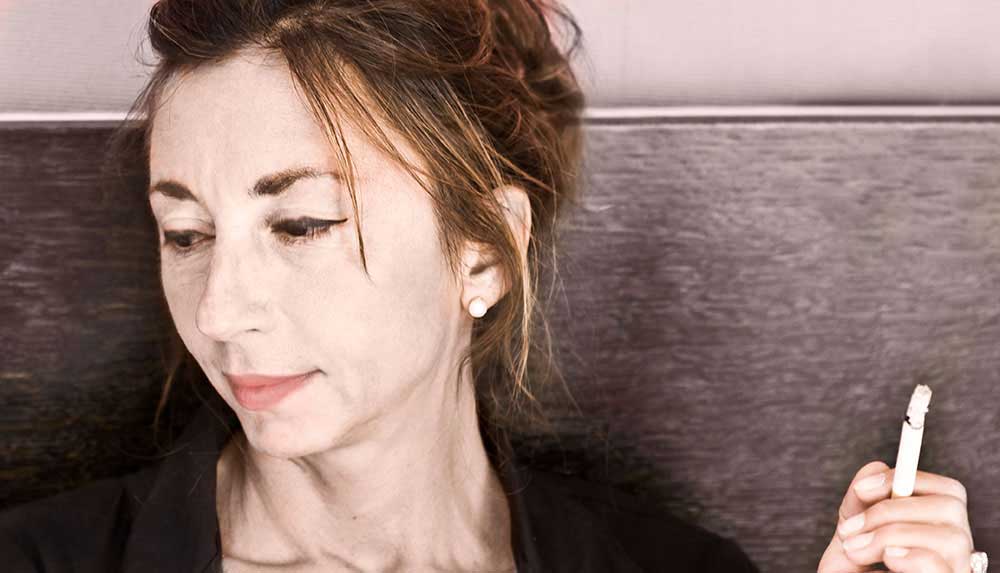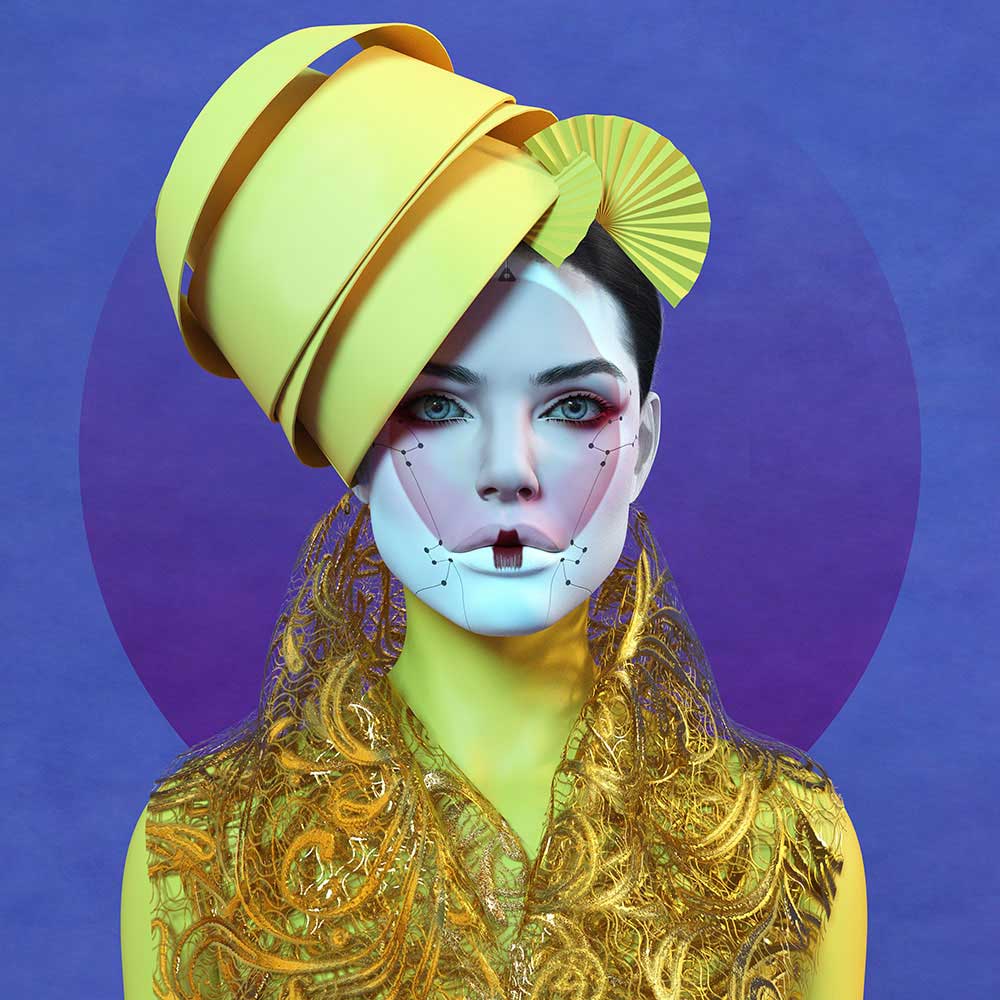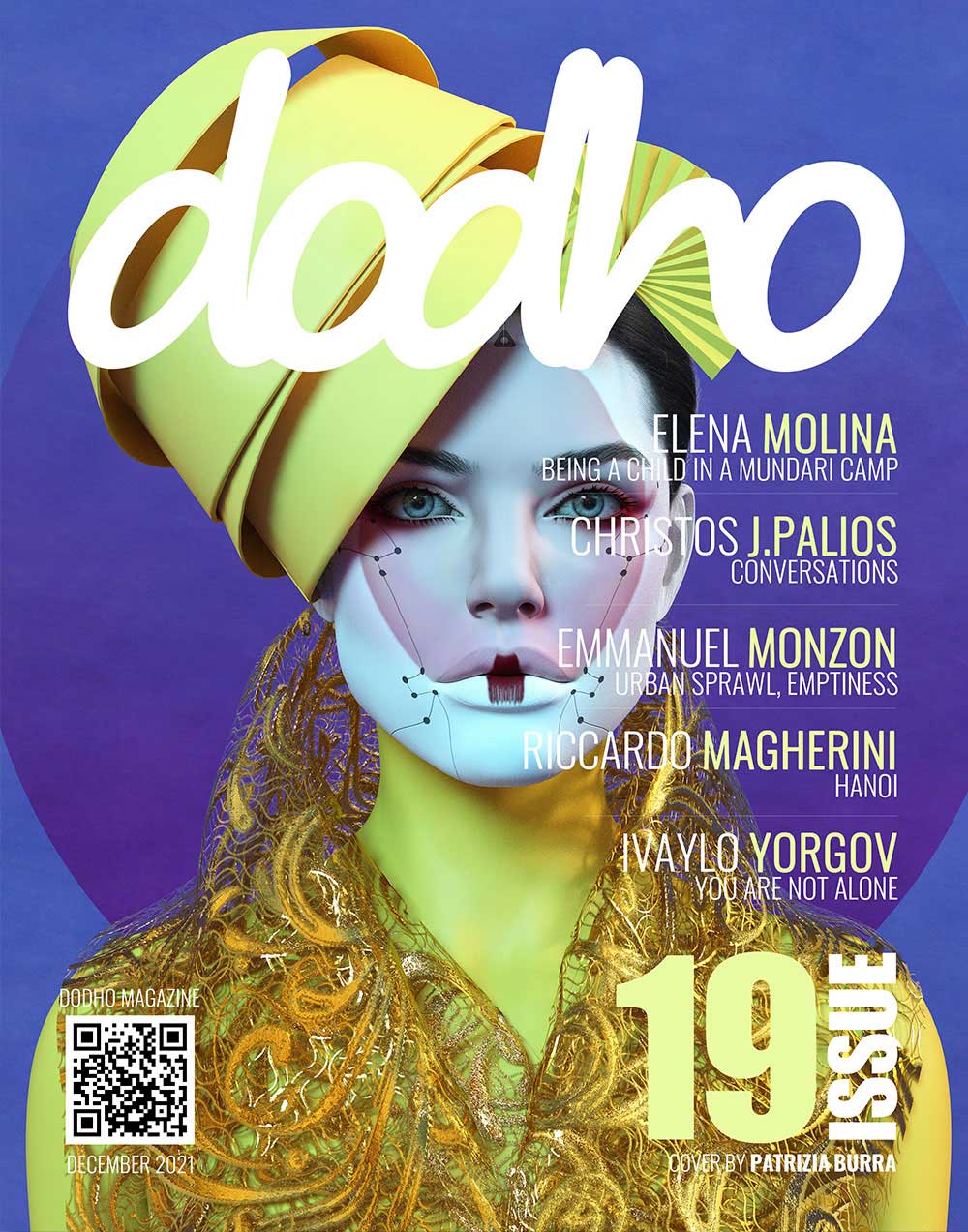Patrizia Burra brings together the Renaissance Classicism with the latest and the most modern Instagram aesthetics. Her concept of female expression and beauty transforms the obscurity of realism into the light of fantasy, creating new characters with her digital masterpieces.
She literally gives life to her portraits, she wants her creatures to breathe, talk and even dance. Her works are a celebration! In this interview, she lets us know what’s behind her works, her ideas, her process of work, her influences and other stories connected to her production. I was lost for words with one of her intimate confessions! Welcome to the stunning and emotional universe of Patrizia Burra. [Official Website][Printed Edition][Digital Edition]
In your portfolio, we can find a tribute to Tamara de Lempicka, the images are as mesmerizing as stunning, they exude beauty and sensuality. I wonder if the women depicted are real models or digital / painting creations. If they aren’t real, what was your inspiration? Could you share with our readers some of your work processes? How has Lempicka influenced your work?
The women in the images are completely digitally created. They exist, even in their human absence.
Of course, the great Lempicka was more than just an inspiration. I wanted to represent her art in a modern way and with a very different technique. Reproduction, therefore, was a set of minds that somehow meet and approach each other. I worked the figures in 3D and imported them into Photoshop to add the background and take them to a higher level. It was a delicate, patient and sweet test. To build images like these you have to offer them your whole soul. You have to make them talk and dance as if they were reclining in a new and peaceful time.
Dust in the wind shows an old lady with a goddess aura. She looks majestic, full of life and energy, though she also possesses a bitter sensation. In one portrait, we find the woman looking straight into the eyes of the viewer, in another image the makeup brings the emotions, and in my favorite, we can see her eyes closed and breathing. Who is this mysterious woman? What is the story behind this goddess?
Your question hit the spot. You have seen very well and clearly understood that behind this series there is a true story. It’s true. She was a goddess. I dedicated this series to one of my best friends who passed away from cancer a few months ago. Her name was Majda, and she was a woman who flew while resting her feet on the ground. Nobody could reach it, nobody could dominate it. She was a cloud that drew you to itself. My images for her are not my last farewell, I just wanted to touch the poetry and the love I feel for her. She got lost in the dust but always inside my heart.
“My child, because this is what it is all about, what we have always said to each other.
I felt you my baby and you felt me yours.
We were both united in desire and strength to protect each other.
Our other favorite phrase was: «you live in my heart».
Now that yours is no longer beating, it is your heart that lives in mine.
We are so close, therefore, that I don’t need to look for your sign or look at a photograph of you.
I don’t need it because you’re here.
You are in my skin and in everything I have learned from you.
It was impossible to reach you, you were too above, you were flying higher than all.
And you are here, in me and in my house, as I am in yours.
We can talk to each other even now.
I feel your arms around me and I know you are protecting me.
And I don’t know how, I really don’t know how, I’m protecting the little girl you are back.
Our dialogue will continue «.
This interviewer was lost for words after this poetry. Thanks Patrizia for sharing your art and your soul with us. Bless your friend, and bless.
In the statement of the series Painting to Photography, we can read: «I tried to release the energy I had in moving them out of my soul. In this free place, I breathed my characters. This series was the window where I could change the world». What is wrong with the world that you would like to change? The escaping windows you have found are brilliant and they are mostly female. Is this the perspective you were looking forward to?
I am a troubled woman. In my head there are angels and demons. All this «feeling» must come out of me and turns into my art. There are many things wrong with the world and also within us. The outburst is a weapon to defend and create. My life depends on art, I am the hands of my head.
There is a spiritual dimension in your work, a depiction full of grandiosity and a corporeal world. We see bodies representing the soul and transcending human life with Italian Renaissance touch and connecting at the same time with the current Instagram aesthetics and with futuristic fashion editorials. How do you find this balance? Do you reach this equilibrium between classic and current tendencies consciously?
There is a spiritual representation. It’s true. Mine is a continuous research and, often, I try to stay current but with strong echoes of history behind it. This is the expression of a contemporaneity that does not forget the past.
What frontiers between painting and photography have you passed in your production? In which discipline have you felt more accomplished and complete?
I tried to blend them into each other, pampering both disciplines. One cannot exist without the other, therefore, I feel complete in both.
What part of your creative process do you enjoy the most? Is it shooting and painting trying to reproduce the world or the retouching digital creations that transform it into works of art?
I like everything! But retouching my images is the thing I like the most!
Finally, I would like to know how do you feel about the social networks and the connections we access with them? Have they helped you to develop your professional work, and what about the creative part, has this been improved because of them?
Well, honestly, social networks don’t do much good. It is a form of narcissism that I allow myself. We need much more participation in very valid contests. And always keep in mind the concept of growing every day. To be curious, to explore. Social networks put us in contact with other artists. This is rewarding.
Thanks Patrizia, it was a total pleasure to know more about you, keep it up! Can’t wait to see your new moves!
Seigar
Seigar is a passionate travel, street, social-documentary, conceptual, and pop visual artist based in Tenerife, Spain. He feels obsessed with the pop culture that he shows in his works. He has explored photography, video art, writing, and collage. He writes for some media. His main inspirations are traveling and people. His aim as an artist is to tell tales with his camera, creating a continuous storyline from his trips and encounters. He is a philologist and works as a secondary school teacher. He is a self-taught visual artist, though he has done a two years course in advanced photography and one in cinema and television. His most ambitious projects so far are his Plastic People and Tales of a City. He has participated in several international exhibitions, festivals, and cultural events. His works have been featured in numerous publications worldwide. His last interests are documenting identity and spreading the message of the Latin phrase: Carpe Diem. Recently, he received the Rafael Ramos García International Photography Award. He shares art and culture in his blog: Pop Sonality.









